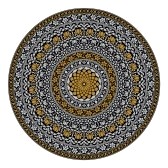 |
American Literature: Romanticism Sample Final Exams 2013 final exam assignment mid-length essay: semester review |
 |
Matthew Martin
6 May 2013
My Own Romantic Journey
The end of a semester is always a turbulent experience. Not only does the
average student become surrounded by assignments for other classes, but also by
the assessment of knowledge through the questions “What have I learned” and/or
“How have I grown since the beginning of the term?” Progressing through a
literature class always has a different ending than a typical class. The term
“Romanticism” had previously been a mysterious one. Prior to our class, I had
heard it used to describe works of visual art and as a genre of current fiction
novels that are usually sold in supermarkets. As I mentioned in my midterm
essay, the various literary movements and eras had frightened me and I was only
familiar with a choice number of authors in our course reading list. In January
I knew I was in for a class that would open my eyes to new reading
experiences--some challenging, others comforting and even charming. Now that I
have reached the final stage of American Romanticism, I can now reflect on my
experience with satisfaction. With any class that is worthwhile, the result was
well worth the effort.
Even though the midterm was fairly recent, we have encountered many works and
styles since then. In my essay for the midterm exam, I notice how uncertain I
was of myself when it came to approaching new authors under the “Romanticism”
umbrella. I was beginning to notice the obvious elements of Romanticism
(desire/loss narrative, gothic elements, sublime and transcendence) but beyond
such points I was treading into unfamiliar territory. The direction of the class
kept me on my toes until the final meeting because the material was constantly
changing at a quick pace, and each work (save for Faulkner’s A Rose For Emily)
was completely new to me. Instead of strictly focusing on the Romantic, the
post-midterm classes were now exposing me to new movements such as Realism and
Modernism, as well as narrative techniques like Local Color or regionalism. Had
this blending and blurring of literary movements taken place before the midterm,
I am almost certain I would have become overwhelmed with the magnitude of the
material. Since the class was structured to introduce these elements gradually
every week, the result was much more manageable than I was anticipating. Not
only would we discuss the familiar foundational Romantic elements in each, but
we would also add new knowledge that related to the particular meeting focus.
Each week was a surprise and there were several moments of personal discovery
for me. My classmates always had worthwhile and interesting topics to discuss,
so the material never became stale.
As far as my own personal interests in the material are concerned, I found the
final meeting introducing Modernism to be one of my favorites of the entire
semester. Fitzgerald has been a long favorite author of mine, and while I was
familiar with “Winter Dreams,” I had never read it. When I noticed a story by
Fitzgerald had been planned for our classes, my first thought was it was a
mistake because I had always referred to Fitzgerald as a “Jazz Age” or Modernism
writer--not a Romantic one. By the final class, I noticed just how Romantic he
could be (notably the desire and loss narrative). The literary movements are not
exclusive barriers and not always strict. There have been many instances of
texts overlapping different movements and styles, but it was always a
comfortable balance.
I also noticed an overlap with the visual as well, especially when we
encountered The Last of the Mohicans. Since I was familiar with visual
art, I expressed an interest in whether or not the visual and written work of
artists and authors was something that coincided or were separate. Completing my
first research post helped me fully understand how landscape art was just as
much influenced by written works as by nature itself. I continued this line of
research into my second post which explored why landscape art remained a popular
form when the literary and physical landscape was moving away from nature
dominating to being dominated. Reading works such as Daisy Miller
inspired me to research that subject because the focus in our texts was moving
away from Nature and more towards society and the expanding human impact on the
landscape. My research proved to be an enjoyable experience because I was able
to connect two different types of art and explore a small thread of their
commonalities. My research journey also helped me articulate the most important
lesson from this course. Literature does not exist in a vacuum, much like
nature. It is influenced by all around it (including visual art) and such a
plethora of influences allows its works to also transcend the boundaries of
“literary movements.”
I’m still grasping many of the concepts of Romanticism. It is my goal to become
more comfortable with reading the material and more adept with noticing elements
we have discussed all semester long. When I took this course, I was also
enrolled in a Modern Poetry seminar where there were several poems that repeated
in our class also, so the material did not stop once I left the classroom, nor
did Romanticism stop in the late 19th century. It is always nice to revisit
material in other classes to receive fresh perspective and insight. Over time,
the texts and time period of Romanticism became more inviting and I am certainly
more comfortable with the material now than I was in January, but there is
always room for improvement in literature-focused classes. As for writing, I
always want to make improvements because it is something I love doing. I’ve
learned I have my own type of dialect that is common to Texans, and though we
studied regionalism and local color, this is not a necessarily good trait to
have when it comes to academic writing. I’m more aware of this now than I was
before, and I’m still attempting to right the wrongs in writing. This is an
ongoing journey, but one I do not mind taking.
|
|
|
|


